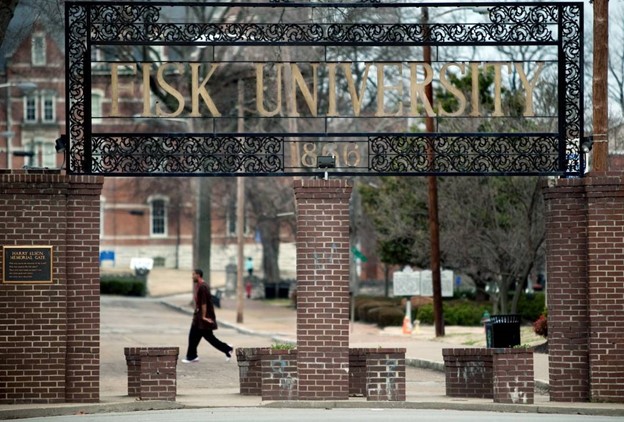NAIA’s lone Black woman commish leads rebrand to HBCU conference

By DERON SNYDER (as published by theGrio)
There are 21 conferences in the National Association of Intercollegiate Athletics (NAIA). Only one is led by a Black woman commissioner.
Effective July 1, that league will have a new name that embraces its mission and membership: the HBCU Athletic Conference (HBCUAC), with the tagline, “Where Winners Thrive.”
After serving for three years in an interim capacity, Kiki Baker Barnes was installed as permanent commissioner of the Gulf Coast Athletic Conference (GCAC) in June 2022. She said her leadership team worked with Black-owned marketing firm Ten35 for two years before choosing the new name.
“We had operated as a conference and a collective of HBCUs since 2010, but there was no ownership,” Barnes told theGrio. “We wanted to think about a name that might be more fitting. I’m really excited about leaning into our identity and continuing to grow the conference. We have a strategic plan to get to 16 members.”
The GCAC was founded in 1981 with three HBCUs – Dillard, Tougaloo and Xavier-Louisiana – and four primarily white institutions located in three Gulf Coast states. Starting this summer, the conference will expand to 13 schools – all HBCUs – located in eight states and one U.S. territory.
Barnes said too many people who couldn’t name a single GCAC member were actually quite familiar with the schools, including deep-rooted HBCUs like Fisk and Talladega. Conversely, HBCUs in National Collegiate Athletic Association (NCAA) conferences were easily identifiable.
“When you say ‘SWAC,’” Barnes said in reference to the Southwestern Athletic Conference, “Grambling, Southern and Alabama State roll off. She pointed out the same dynamic for members of the Mid-Eastern Athletic Conference (MEAC), Southern Intercollegiate Athletic Conference (SIAC) and Central Intercollegiate Athletic Association.
“But when you said, ‘Gulf Coast Athletic Conference,’ people were like, ‘Hmm?’ Nobody knew who that was. But I’d list the schools and people would know them. The one identifier amongst us is we’re all HBCUs.”
The conference was on the brink of collapse in 2010 when six schools departed, leaving four HBCUs as the sole members. Barnes, who spent nearly 16 years at Dillard as a women’s basketball coach and the athletic director, became conference president – “I took over a sinking ship” – and immediately helped recruit new members like Philander Smith, Edward Waters, and Voorhees.
She said reaction to the rebranding has been mixed, as expected. The HBCUAC is the youngest HBCU conference. Parts of the old guard aren’t thrilled with the new name, perhaps considering it a bit presumptuous. But critics are far from her mind or target audience.
“I’d say the people that have money have been very excited,” said Barnes, a fierce competitor who played basketball at New Orleans and holds the school record in the triple jump. “That makes me happy for potential brand partnerships that can happen. I’ve gotten good feedback from coaches and people who have followed our conference and are familiar with what we’ve been doing. They’re very excited.”
The rebranding will take effect on the same day that Stillman, Voorhees and Wilberforce become official members. Five other schools have joined or re-joined since 2022, including the University of the Virgin Islands, which became the first school from a U.S. territory to join an NAIA or NCAA conference in the 21st century.
Stillman athletic director Terrance White told WBRC-TV that his athletes will enjoy a better cultural experience in their new league.
“Similar size schools with similar sized missions and visions and values,” White said. “Similar athletic programs, you know, similar students coming from similar backgrounds. All of that turns out to be something that is immeasurable in the long run.”
NAIA athletic programs are much smaller than top-level NCAA counterparts that collectively generate billions in TV revenue. But no matter its size, every school has a mission that extends beyond athletics. Sports help serve that mission, even in conferences like the GCAC that don’t field football teams.
“We don’t expect to earn millions like the big schools,” Wilberforce president Vann Newkirk told the Xenia Daily Gazette. “But we know that at our level every penny counts, and running an athletic program is a business. This move will energize our alumni base which in turn will help us to increase attendance and overall interest in the University.”
Sports can bolster a school’s profile and brand, creating more ways to share information and boost enrollment. Barnes said the HBCUAC will do that and more for its member institutions.
“When we talk about ‘Where winners thrive,’ do you know what kind of stories we can tell? There are tons of stories, not just athletics,” she said.
“This gives us a platform to really advance ourselves and tell the stories of our institutions so they’ll have just as much brand recognition as Howard, as Spelman, as Morehouse, as FAMU, as Grambling, Tuskegee and all these schools people have known.”
 Follow
Follow
